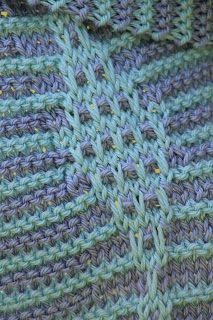 |
| Baby Bear Hooded Cowl Size 7 - 12 (so it will fit more snugly on a larger child) |
I think we've probably all seen some version of this hat, what with the ears, the hood, and the cute kid poking out and all. So here, by request, let me present my version: the Baby Bear Hooded Cowl, which knits up quickly on size US 10 needles and with chunky weight yarn. Of course, it's not just kids who deserve to look this cute, so I've also sized the thing from toddler to adult. Make one for your husband! He'll love it, I promise (note: my promise does not constitute a legal, binding agreement. In fact, make one for your husband at your own peril. Seriously.)!
Sizes: Toddler (Ages 4 - 6; Ages 7 - 12; Teen/Small Adult; Large Adult)
Yarn: Plymouth Yarn Encore Chunky Tweed (75% Acrylic, 22% Wool, 3% Rayon; 143 yards [131 meters]/100 grams); #T599 Brown - one skein (two skeins; two skeins; two skeins; two skeins)
 |
| A closer look at the face hole. Filled by one of the cutest little faces. |
Notions: Tapestry needle, stitch marker
Gauge: 14 stitches = 4 inches on size 10 needles
So let's get started! Using your 16" size 10 circular needle, then, cast on 64 (68; 72; 76; 80) stitches, place marker, and join in round. Then we'll knit the following edging rows:
Edging Rows 1 - 3: purl
And once those bad boys are done, knit 2" (3.5"; 5"; 7"; 9") in stockinette. Switch to your size 9 needle, and we'll do a few ribbing rows before we move on to the hood, like so:


































